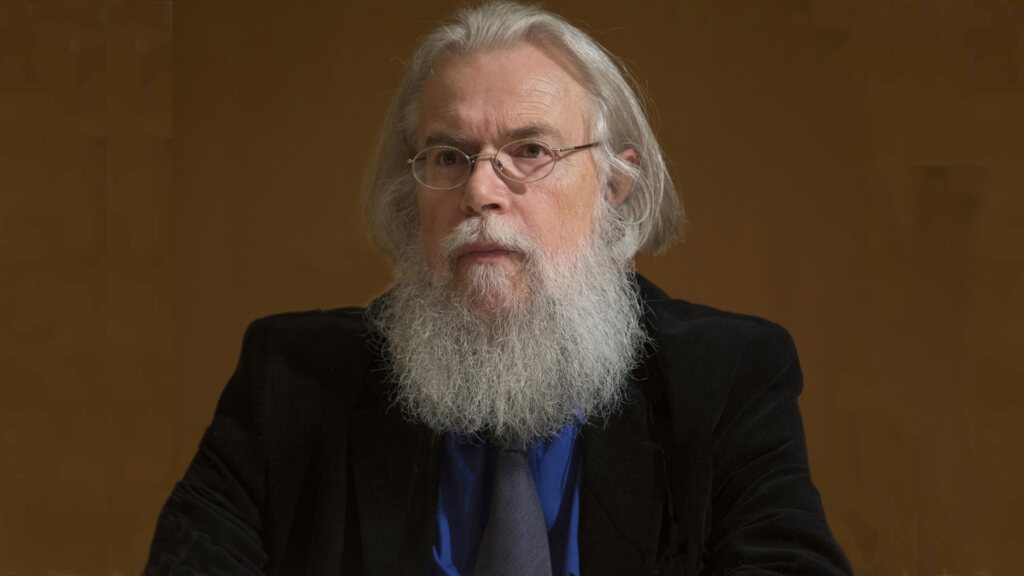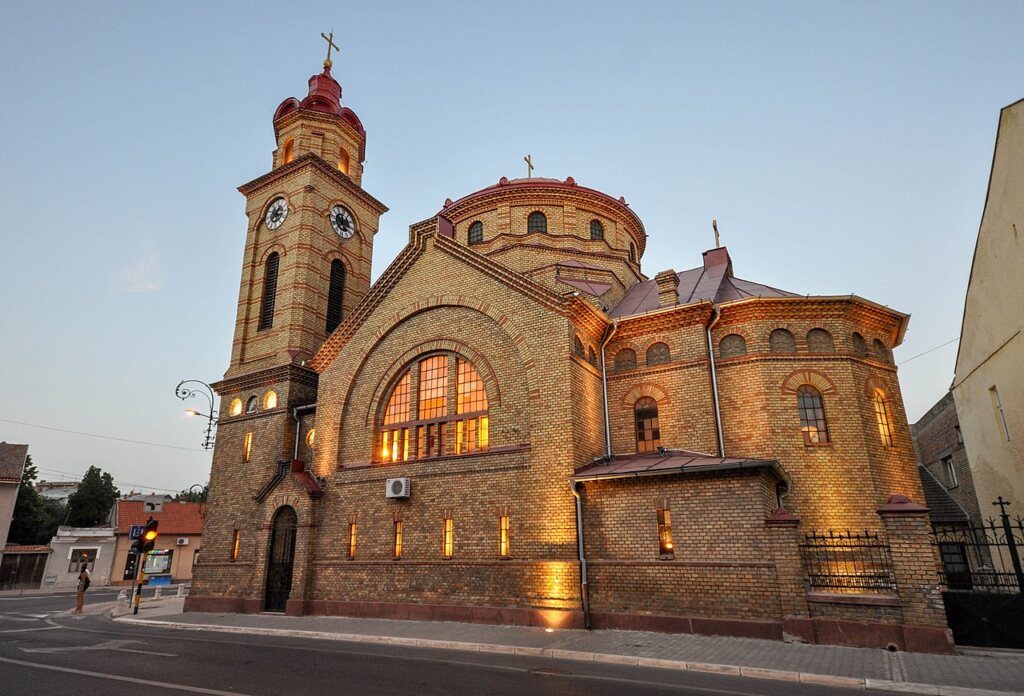On 28 April 2013, the Orthodox Church celebrates the Entrance of the Lord in Jerusalem, a feast also known as the Palm Sunday. During the Divine Liturgy the evangelical pericope of Saint John was read, chapter 12: 1-18, presenting the oiling of Jesus Christ, our Lord, in Betania, as well as the triumphal entrance of the Lord in Jerusalem.
At the Patriarchal Cathedral the Divine Liturgy was celebrated by His Beatitude Daniel, Patriarch of the Romanian Orthodox Church, assisted by a group of priests and deacons, in the presence of many faithful.
After reading the evangelical pericope the Patriarch of Romania delivered a sermon in which he explained the symbol of the myrrh with which Maria, Lasarus’ sister oiled Jesus Christ, our Lord: “The very precious myrrh anticipated the Holy Great Myrrh used for consecration in the Orthodox Church on the Maundy Thursday. The Holy Great Myrrh made up of many spices, nice smelling plants, oil and wine boiled together represents both Jesus Christ, our Lord, and the Holy Spirit whom He sent to His disciples. This myrrh is used at the consecration of the churches, of the antimises which are canvas altars on which the laying of Jesus Christ into the grave and the Last Supper are very often painted, absolutely necessary for celebrating the Divine Liturgy. This antimis also contains relics of the martyrs. Thus, the antimis is used as Holy Table when the Divine Liturgy is celebrated outside the church, and as place of worship. The Holy Great Myrrh represented by Mary’s very precious myrrh, Lasarus’ sister, also shows the love of the Church for Christ as an answer for all these gifts. The myrrh also means all the gifts that we bring to Christ in the Church, the many beautiful vestments, icons, objects of rite as a sign of our love.
His Beatitude also shows us that the Saviour urges us to focus first of all on the relationship with Him: “Jesus Christ, our Saviour, shows us that this gesture of Mary’s is entitled because it expresses her love and gratitude for Christ Who gave life to her brother Lasarus. This is why we see that Jesus Christ, our Lord, does not oppose spiritual life to social action. He does not oppose Liturgy as thanksgiving service to God and philanthropy as brotherly devoted merciful love for the poor. He says: “When she poured this perfume on my body, she did it to prepare me for burial” predicting His sacrifice, sacrificial love and “you always have the poor with you”.
In other words, the Saviour urges us to cultivate the relationship with Him first of all, the spring of life and of all gifts, and to help the poor too after we have filled ourselves of His devoted sacrificial love through the Divine Liturgy which includes all the gifts of the Holy Spirit. If we help the poor but we do not attend the Divine Liturgy, there is the risk to turn the helping of the poor into an act of pride, of selfish superiority towards the poor. Thus, we need a permanent relationship with Christ through prayer and holy services to get His devoted, disinterested, and merciful love. Such a love must be shown in mercy afterwards”. The Primate of the Romanian Orthodox Church emphasised that the feast that reiterates the Entrance of the Lord in Jerusalem invites us to meditate on the passions that Jesus Christ, our Lord, suffered: “The Gospel shows us that Lasarus’ Resurrection from the dead on the fourth day when the body began to decompose surprised the crowd of people and increased their enthusiasm and devotion to Christ because many people followed Him. However, Lasarus’ resurrection from the dead rushed the passions of Jesus Christ, our Lord because the leaders of the people, the scholars and Pharisees, the hierarchs of the Jewish people became even more envious and hateful towards Jesus after He resurrected Lasarus from the dead because the crowd began to leave them and go to Christ. Then, they decided to kill Lasarus too, because he was the living proof of Christ’s power to resurrect the dead. On one hand, the people rushed to meet Christ, to acclaim Him, to meet Him as an emperor, and on the other hand the leaders of the scholars and Pharisees together with the hierarchs, the religious authorities of the time, were planning to catch and kill Jesus. Therefore, this feast guides us to the Holy Week of the Holy Passions of Jesus Christ, our Lord, to His crucifixion and death, as well as to His Resurrection from the dead defeating sin, hell and death and giving eternal life to the world. So, in today’s Gospel we see how Mary’s joy and gratitude and of the people too for Jesus began to be intertwined with the hate and envy of the scholars and of the Pharisees of the Jewish people.”
The Lord’s lowliness is present in every moment of His life, His Beatitude Patriarch Daniel showed in his speech: “Today’s feast marks the joy of the crowd to meet Christ and the fulfilment of a prophecy, namely that the Emperor Israel will come to Jerusalem riding a donkey. He was riding a donkey, as a prophecy said: “Do not be afraid, daughter of Sion, because your emperor comes to you riding a donkey”. The moment He comes into Jerusalem in triumph he remains humble because the donkey was a modest animal, just like now. It was a proof of modesty for a family who had no horses but only a donkey to do their work. Therefore, the Saviour’s lowliness is present in every moment of His life, not only when He is sad, but also when He is acclaimed and met with much joy. The Gospel says that, in general, it was the children and young people that brought flowers, fig and trees branches to the Saviour as a sign of appreciation and admiration. This is why we too carry willow branches, fig leaves and other flowers in procession or when we leave from here to have them consecrated from the church.”
The Patriarch of Romania has also congratulated the Romanians who were celebrating their name day: “Yesterday we participated in the Palm Sunday Pilgrimage and I said that these flowers also symbolise the flowers of faith and of the virtues as Saint John Chrysostom teaches us, namely the flowers of the virtues that we got through prayer, fasting, repentance, and restraining. So, the flowers of the faith and of the spiritual effort are symbolised by these flowers of today’s feast. There are over 1,400,000 Romanian people, men and women of flower names, so that we congratulate them all and pray God to give them good health, joy and always be flowers of faith, hope and of merciful Christian love for those around in the Church. The best known name is Florin and then other names like Florinel, Ciorel, Viorica, Crizantema, Panseluța and many other flowers making the names of the faithful of our Church.”
During the Divine Liturgy His Beatitude ordained the young theologian Răzvan Mihai Ciubotariu – religious singer both at the Patriarchal Cathedral and at the chapel of the Patriarchal Residence – as deacon for the chapel of the Patriarchal Residence dedicated to Saint Great Martyr George.
The liturgical answers were given in the morning at the Matins service by Tronos psalm group of the Romanian Patriarchate, and at the Divine Liturgy by Nicolae Lungu chorus of the Romanian Patriarchate.
To end with, the faithful present received small icons of the Entrance of the Lord in Jerusalem and willow branches on behalf of the Patriarch of Romania.






